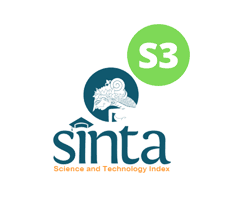Perencanaan lanskap ruang terbuka sebagai fungsi edukasi di lingkungan pendidikan SMA Kornita Bogor
DOI:
https://doi.org/10.24843/JAL.2025.v11.i01.p07Keywords:
learning resource, landscape planning, educational open space, Kornita High SchoolAbstract
Open space landscape planning plays an important role in supporting educational functions within the Kornita High School environment. Kornita High School is the only secondary school located within the campus of IPB University (Bogor Agricultural University), in Dramaga, Bogor. As the school's range of activities becomes increasingly diverse, the demand for space continues to grow. Several issues have emerged, including limited parking areas, building damage caused by sports activities, and the presence of venomous animals and wild primates. These problems stem from the lack of proper spatial planning based on landscape architecture
principles, particularly in the management of open spaces. This study adopts a student activity-based approach to improve the accuracy of planning. The objective is to identify, analyze, and propose planning solutions that support educational activities at Kornita High School, based on the planning theory of Simon and Starke. The research method employed is a survey, utilizing both qualitative and quantitative descriptive analyses. Data collection was conducted through observation, interviews, and literature review. Observations reveal that abandoned open spaces—lacking routine maintenance such as pruning—have contributed to the presence of wild animals. Interviews indicate that comfort and safety in parking areas and sports fields need improvement, and that students
require open spaces for artistic and creative activities. The study resulted in a site plan developed under the concept of a “Learning Resource,” which is manifested through the inclusion of greenhouses, fruit gardens, outdoor learning areas, green corners, sports fields, and small-scale (alit) theaters.
References
Arifin, Hadi Susilo. 2019. 2019. Dasar-dasar Arsitektur Lanskap – Fundamental of Landscape Architecture.
http://hsarifin.staff.ipb.ac.id/2019/08/18/2019-dasar-dasar-arsitektur- lanskap -fundamental-of-
landscape-architecture/
Fasa, Balqis Feparima dan Indung Sitti Fatimah. 2019. “Konsep taman edukasi berbasis aktivitas pelajar di sekolah dasar Islam terpadu Sholahuddin Bogor”. Jurnal Arsitektur Lanskap Institut Pertanian Bogor (JIPI), 5(1):125-132. ISSN:2442-5508.
Husamah. 2013. Pembelajaran Luar Kelas (Outdoor Learning). Jakarta: Prestasi Pustaka Raya Publisher.
Hasibuan, Moh. Sanjiva Refi, Ray March Syahadat, Lasmaria Sidabutar. 2020. Perencanaan Dan Perancangan Lanskap Taman Maju Bersama Haji Saibun Di Kelurahan Jati Padang, Jakarta Selatan. Jurnal Infrastruktur, 6(1):15-24. https://doi.org/10.35814/infrastruktur.v6i1.1241
Hakim, Rustam. 2010. Ruang Terbuka dan Ruang Terbuka Hijau. Jakarta: Universitas Trisakti.
Simonds, J. O. dan B. W. Starke. 2006. Landscape Architecture. New York: McGraw-Hill Companies.
Sulistiari, Aunal Adha. 2017. Putih Abu di dalam Greeen Campus. https://muda.kompas.id/baca/2017/08/02/putih-abu-di-dalam-green-campus
Tatang, Dede. 2018. Pentingnya Mengajak Anak Didik Belajar di Luar Kelas. https://www.kompasiana.com/karbox/5b84924b6ddcae068a552973/peran-penting-pembelajaran-di-luar-kelas-terhadap-prestasi-siswa
Tetsuya, Reza. 2015. Proses Perencanaan dan Desain dalam Arsitektur Lanskap https://slideplayer.info/slide/1935971/
Utami, Ni Wayan Febriana, Mohammad Birrul Walidaen dan Lury Sevita Yusiana. 2017. Perencanaan Taman Islam pada Lansekap Islamic Center Provinsi NTB. E-Jurnal Arsitektur Lansekap, 3(1):77-86. ISSN: 2442-5508.
Widayanti, Enny. 2020. Kartasura City Garden (Perancangan Dan Perencanaan Taman Kota Kartasura Berkonsep Education Garden). Jurnal Arsitektur Universitas Muhammadiyah Surakarta. http://eprints.ums.ac.id/63833/
Downloads
Published
Issue
Section
License

This work is licensed under a Creative Commons Attribution-ShareAlike 4.0 International License.
An author who publishes in the Jurnal Arsitektur Lansekap (JAL) agrees to the following terms:
- Author retains the copyright and grants the journal the right of first publication of the work simultaneously licensed under the Creative Commons Attribution-ShareAlike 4.0 License that allows others to share the work with an acknowledgement of the work's authorship and initial publication in this journal
- Author is able to enter into separate, additional contractual arrangements for the non-exclusive distribution of the journal's published version of the work (e.g., post it to an institutional repository or publish it in a book) with the acknowledgement of its initial publication in this journal.
- Author is permitted and encouraged to post his/her work online (e.g., in institutional repositories or on their website) prior to and during the submission process, as it can lead to productive exchanges, as well as earlier and greater citation of the published work (See The Effect of Open Access).
Read more about the Creative Commons Attribution-ShareAlike 4.0 Licence here: https://creativecommons.org/licenses/by-sa/4.0/.


















